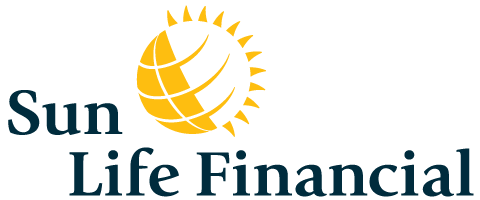Tax Planning Strategies- Asset allocation
Investors can optimize their real rate of return by utilizing effective asset allocation strategies to reduce tax exposure. Carefully dividing your investments between registered and non-registered portfolios will help to maximize your overall return. Keep in mind, investments inside your RRSP are tax deferred and a TFSA (Tax Free Savings Account) is not taxable. But everything outside of these investments will have a tax implication.
Understanding how your investments are taxed goes a long way in determining where to invest your money.Investment income has three main types. Each has different tax levels when held outside your registered investments.
- Interest income has the highest tax rate of the three regardless of your income. Whether you receive the interest or decide to reinvest it, it is fully taxable and accrued annually.
- Income from Canadian dividends are taxed more favourably than interest income but it is important to remember that there are exclusions in the form of income from rent, royalties and foreign dividends which are taxed at the same rate of interest income.
- Capital gains income is taxed on only 50 percent of the total and the gains are included in your income when the gains are realized.
Although every province varies, an Ontario resident who sits at the highest marginal income tax bracket would pay over 46 percent* tax on interest income, over 26 percent* on eligible dividends and over 23 percent* on capital gains if these investments are in a non-registered account. If these three incomes are within a registered portfolio such as RRSP or RRIF (Registered Retirement Income Fund), the taxes are deferred until you begin to make withdrawals. The withdrawals are then considered ‘income’ and the entire amount is taxed at your marginal rate of tax.
It would be great to funnel your entire portfolio into an RRSP or TFSA but each carries certain limits of contribution. If your portfolio includes fixed income securities, you should take maximum advantage of keeping these within an RRSP or TFSA for tax shelter purposes. If you have reached the limits of your tax-sheltered investments, any equity investments that produce “tax-preferred” income (capital gains and dividends) would be suitable to include in a non-registered account. Don’t let the tax implications be your sole motivating factor when choosing your investments. Try to gear your investments such that they are suitable for your specific situation and risk implications. Once you have accomplished this you can then focus on the best tax efficiency.
Income Splitting
Income Splitting allows you to shift the income and capital gains of the higher household income earner to the lower earner, thereby reducing taxes. A Canadian resident can split up to 50% of any income with their spouse that qualifies for the existing pension income tax credit. For those under the age of 65, these payments include annuity payments made under a Registered Pension Plan (RPP) and certain death benefits. For those over the age of 65, the payments include any income derived from their registered plans (RRSP, RPP, RRIF, LIF, PRIF, LRIF, DPSP). It is important to note that Old Age Security (OAS) and the Canada Pension Plan (CPP) cannot be split under this provision. However, CPP can be split with your spouse – this declaration must be made directly with the government.
Non-Registered Funds
It is generally more tax-effective to generate retirement income from your personal or non-RRSP savings and investments first– thus allowing your RRSP savings to remain tax-sheltered for as long as possible.
Tax-Preferred Investments
There are many ways to decrease taxes. In the retirement phase of the financial life cycle, we strive to hold interest-bearing investments like GICs and bonds in registered plans (RRSP, RRIF, TFSA) where the income is sheltered from taxation. Investments that generate dividends and capital gains are placed in non-registered accounts where the income receives tax-preferred treatment. If possible, try to have interest-bearing investments in the name of the lower-income earning spouse. Interest income is taxed at the same rate as earned income. The lower the spouse’s earned income, the lower the taxes owed on interest income.

RRSP Contributions
There are many ways to decrease taxes. For a single person, maximizing your RRSP or pension contribution is one of the most effective ways simply because you are lowering your taxable income. For couples, the person in the higher marginal tax bracket should have savings allocated to his/her RRSP to maximize his/her RRSP deduction limit (which in turn will maximize the family’s tax refund). If one spouse earns significantly more income than the other, consider using a spousal RRSP. This allows the higher-income earner to make a contribution in the name of the lower-income earner. The tax deduction is applied to the higher-income earner, but the actual asset is in the name of the lower-income earner.
Portfolio Tax Efficiencies
If possible, try to have interest-bearing investments in the name of the lower-income earning spouse. Interest income is taxed at the same rate as earned income. The lower the spouse’s earned income, the lower the taxes owed on interest income. We strive to hold interest-bearing investments like GICs and bonds in Registered Retirement Savings Plans (RRSPs) where the income is sheltered from taxation. Investments that generate dividends and capital gains are placed in non-registered accounts where the income receives tax-preferred treatment.

Charitable Donations
Registered charities in Canada perform valuable work in our communities, and Canadians support this work in many ways. The Canada Revenue Agency (CRA) regulates registered charities under the Income Tax Act and is committed to providing donors with relevant information and just as importantly, tax credits for assets donated to a charity. Tax credits are calculated as a percentage of the amount you donate in a given year. For example, in 2008, the first $200 you donate is eligible for a federal tax credit of 15% of the donation amount and 29% on any amounts in excess of $200. You may also be eligible for a provincial tax credit for your donations (the amount of the provincial tax credit varies between provinces). Generally, you can claim all or part of your donations up to a limit of 75% of your net income. As an exception, gifts of capital property are limited to 100% of your net income. Also, for the year a person dies and the year before, the 75% limit is extended to 100% of the person’s net income. Unlike other donations, cultural and ecological gifts are not limited to a percentage of net income.
You do not have to claim all of the donations you made in the current year on your current-year return, as these tax credits can be carried forward and applied to any of the following five taxation years. You can also combine your receipts with your spouse and have only one person claim the entire amount (this is generally preferable to maximize the higher 29% tax credit rate). If you have investments (stocks, bonds, mutual funds) that have an accrued capital gain, it is more tax preferential to gift the physical investment to the charity as CRA will allow you to avoid paying tax on the accrued capital gain (as opposed to selling the investment, crystallizing the taxable capital gain and gifting the residual cash proceeds to the charity). For updated donor information, including current donation tax credit rates, please visit the CRA website.










